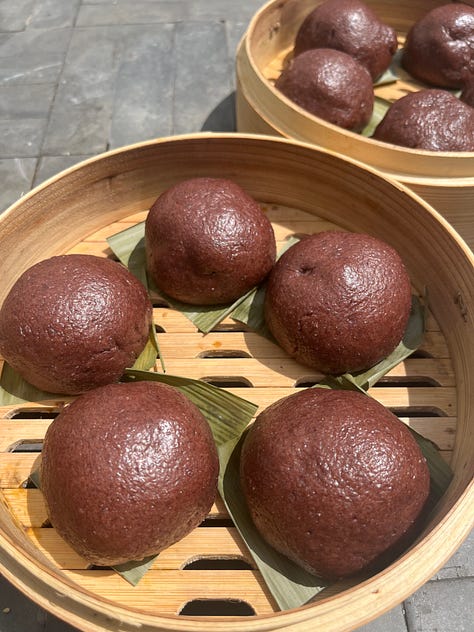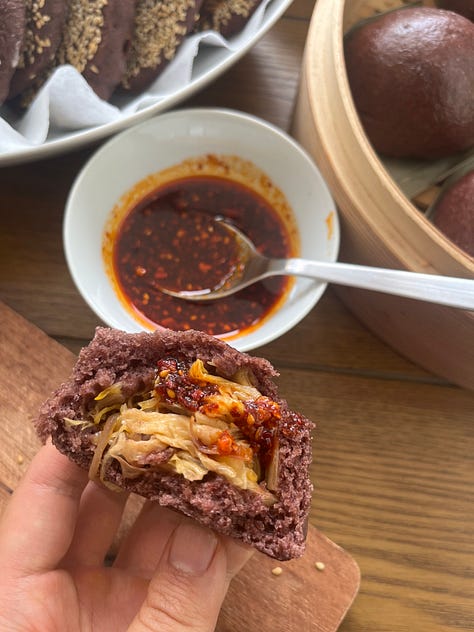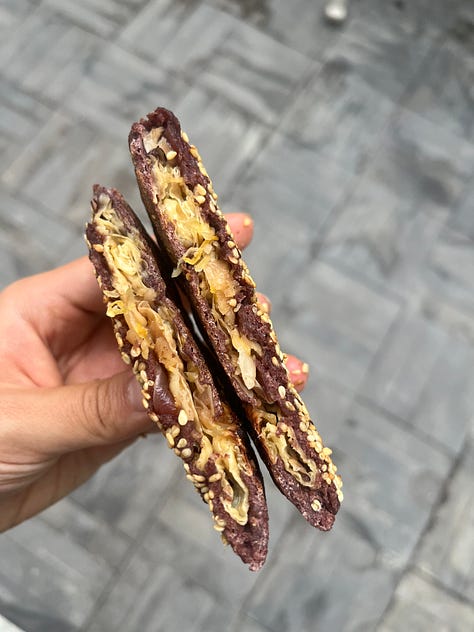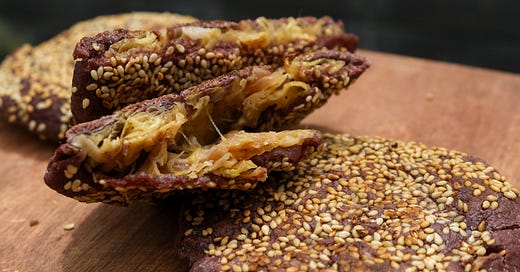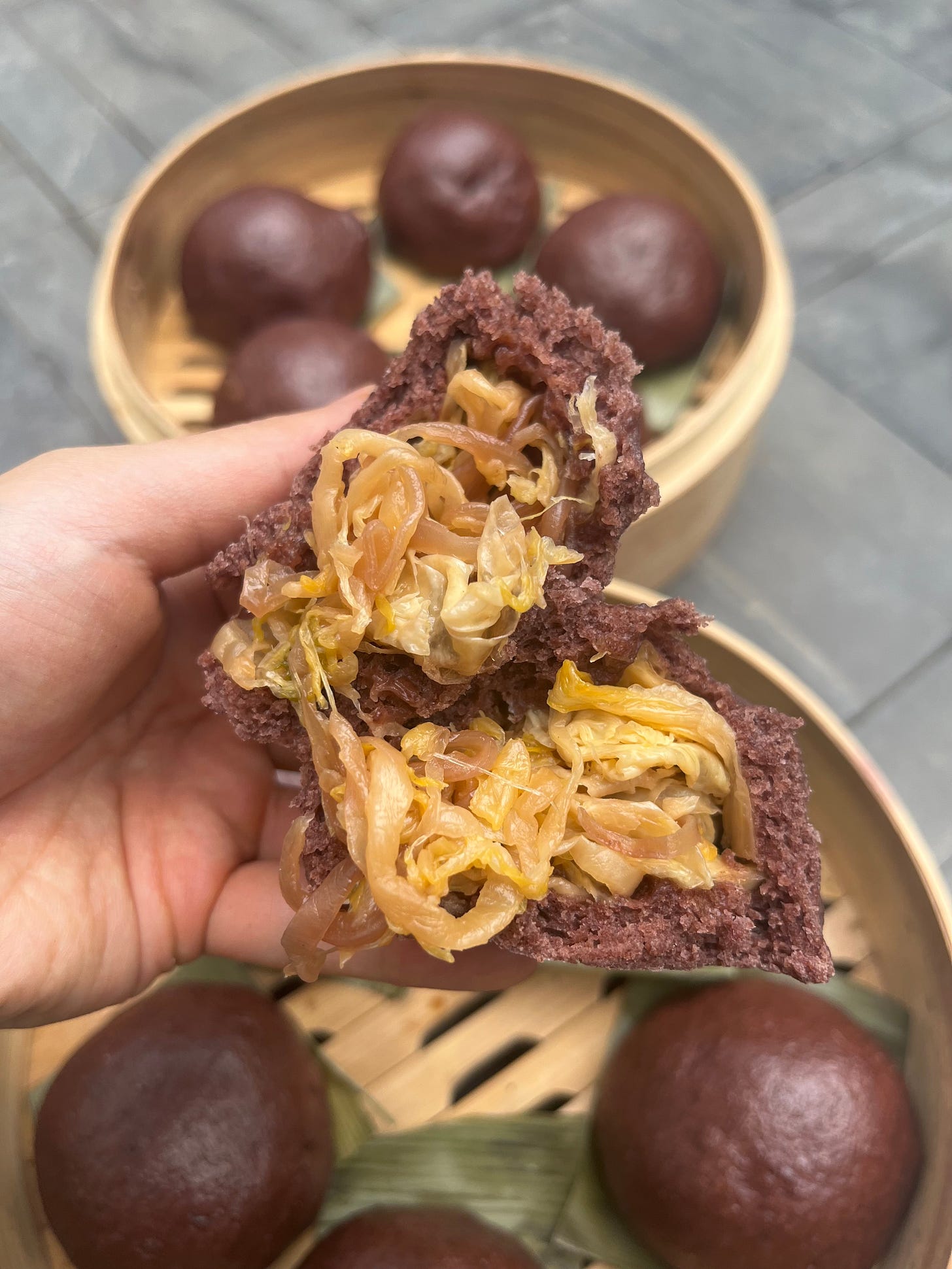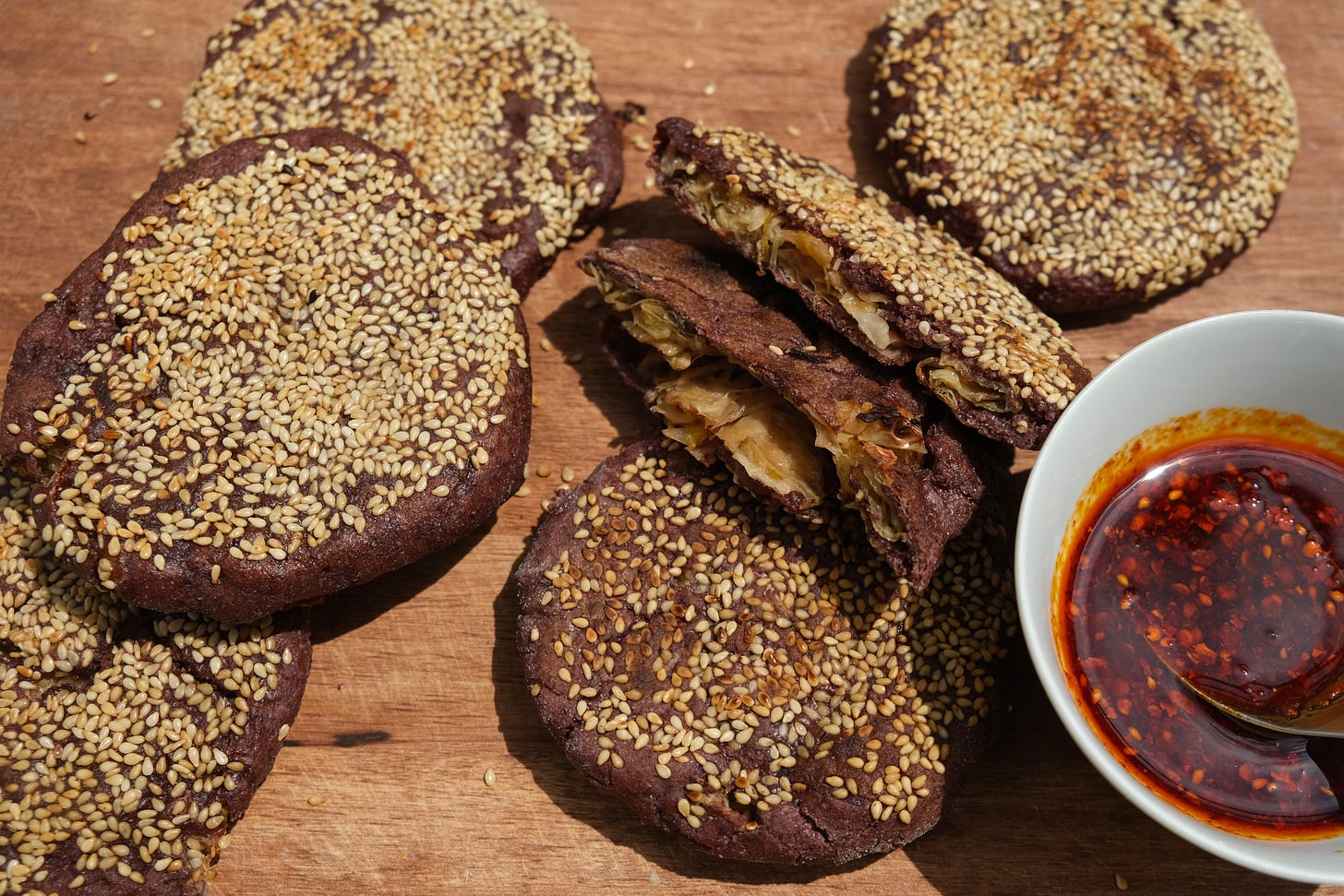This week’s experiment: naturally fermented, steamed vegan baozi using 100% rye flour (no commercial yeast or wheat flour). Chinese bread is soft, uniform and crustless, the opposite of European bread. However, I am a sucker for crisp edges, so I turned half of the dough into pan-fried flatbreads, encrusted with sesame seeds. I still can’t decide which version I like better, so here’s the recipe for both.
Chinese people have a long relationship with sourdough. In northern China, breads were traditionally made using laomian or “old dough” 老面. Every time my grandparents made mantou they would pinch off a hunk of this wild-yeast dough to save for the next batch. You could probably buy a starter in the market, but the laomian was generally passed down in families, preserved by drying. Chinese sourdough is also called 面肥 (mianfei, “dough fat”), 面头 (miantou, “dough head”) or 面起子 (mian qizi, “dough-raiser”).
Sadly, when commercial yeast became readily available post-Cultural Revolution, laomian in homes largely disappeared in favor of convenient (and flavorless) buns made with refined white flour.
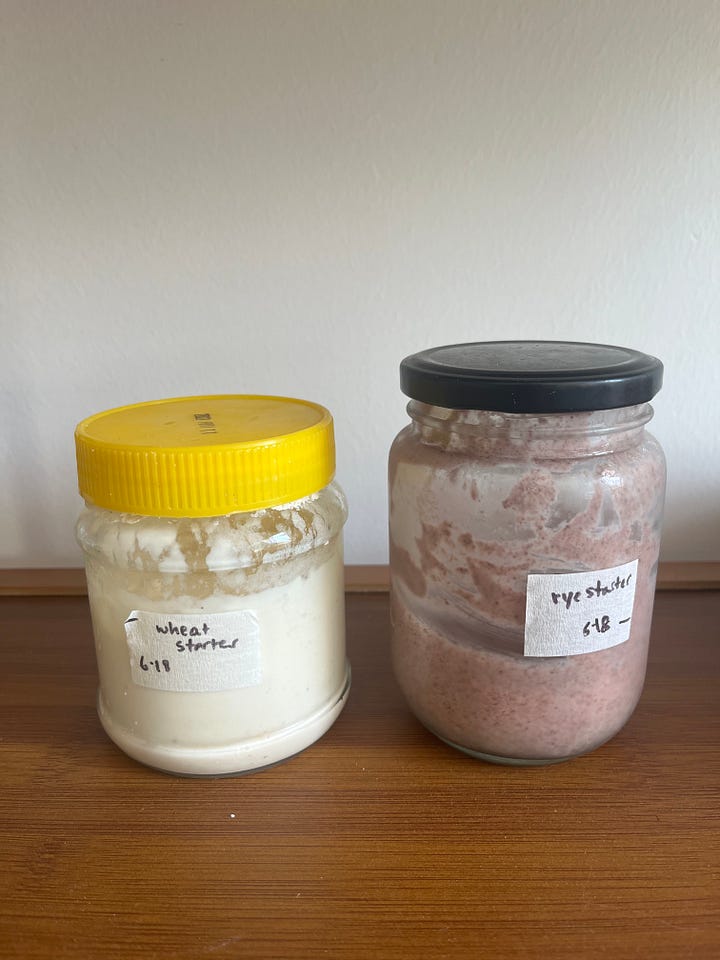
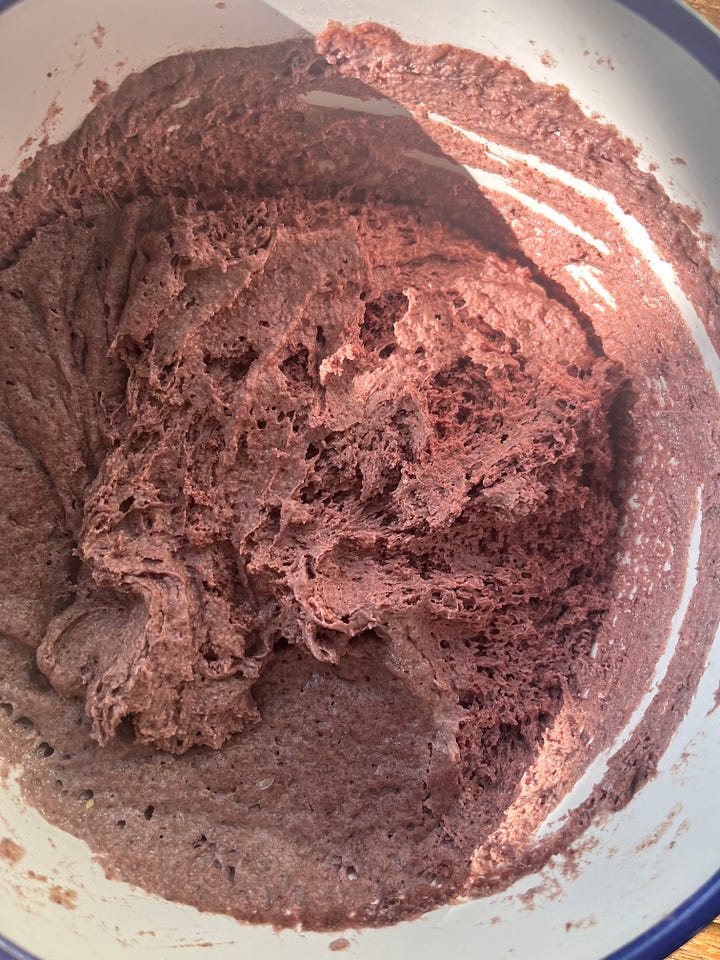
Laomian mantou 老面馒头 shops still exist, however, and home cooks are making their own starters again due to a surging wave of interest in traditional fermentation. Whole grains are having a comeback too, with sorghum, corn, purple rice, rye, barley, millet, and buckwheat moving with the upward mobile from the coarse fare of desperation to a healthy choice for conscious eaters.
There are a few differences with Western and Chinese sourdough. In southern and coastal China, laomian (“old dough”) is made with fermented rice or 醪糟 laozao, glutinous rice inoculated with wine yeast, which has a sweet-leaning mildness suitable for dimsum-style bread and steamed cakes. Northern bread is more similar to European sourdough in its choice of starter: wild yeast with a higher ratio of lactic acid.
I was surprised by how much Chinese people don’t like sourness in bread. It’s associated with overproofed bread. Mantou shops would neutralize the acid with food-grade alkali (食用面碱 shiyong mianjian), kneading the alkali solution into the dough after it was proofed, often with sugar too.
I personally love the taste of sourdough. This baozi is like a Reuben sandwich in Chinese form: sour cabbage or sauerkraut, tofu skin, and caramelized onions enclosed in malty, tangy bread.
